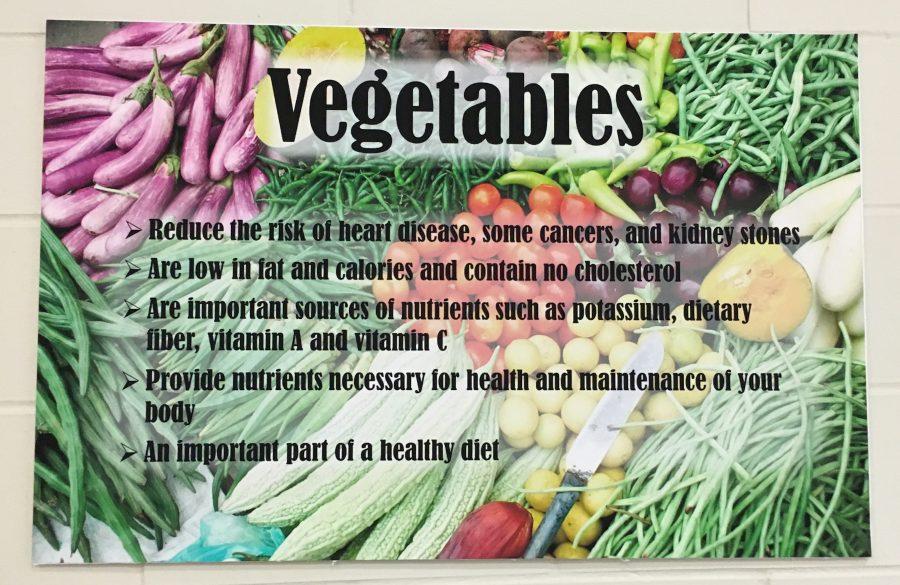Food for thought, revamping cafeteria standards
Posters hanging in the cafeteria stress the importance of adding vegetables to your every day diet. Similar posters advocate for other healthy foods to look out for like fruit, and subbing dark chocolate for other types of sweets.
December 19, 2016
What is the difference between a candy bar and a cookie?
In the minds of most students the answer is unclear, both snacks are sweet treats, but is one really more unhealthy than the other?
As the Glen Rock School District and Cafeteria staff team up to make the school food more nutritional and healthy, many of the students’ favorite lunch and snack items are being knocked off the shelves.
The goal of this movement is to provide all students with a healthier lunch option while keeping it affordable for them as well as the school.
This subject was brought up by the Board of Education in its Nov. 16 Board Meeting. “The Board believes that children need access to healthful foods […] in order to grow, learn, and thrive, and that good health fosters student attendance and education.”
Based off data recording that in the past two years obesity rates have double in children and tripled in adolescents, the school and Board have decided to prohibit certain products from being sold in the cafeteria.
Food and drinks with sugar listed as the first ingredient are being cut, as well as foods of minimal nutritional value, defined by the U.S. Department of Agriculture, and all types of candy, as defined by the NJ Department of Agriculture.
Mr. Kurz, a health teacher as well the head varsity football coach emphasizes that having healthy food options is important for a healthy lifestyle.
If our cafeteria enables students to guzzle down a soda or Snapple before returning to afternoon classes it is a catalyst for lack of concentration and distraction.
Consuming large amount of sugar affects our bodies in ways that we can’t see, and for much longer than we realize. Sugar intake affects performance in school as well as sleep.
Mr. J.P. McCarten, the head Track and Field coach, agrees with Kurz. “I think for over all attention, proper rest, and proper time to recover from the day, nutrition is very important and plays a huge role,” McCarten explains.
But why should we ban candy and soda when high school and middle school students buy stacks of the cafeterias famous chocolate chip cookies to feast on during lunch?
“The new food program is about adding healthy options one day a week to start,” explains Ms. Elizabeth Carr, Board member.
However, although the school is making changes to the cafeteria food to benefit students, they have no control over food sold in school after the day ends.
So, the cafeteria adds healthier options but kids can still stuff themselves with brownies from a bake sale after school.
Giving kids different options to supplement their lunches will help them learn to eat a more nutritious diet and give them more energy for learning during the day. But should the school be taking bigger steps to improve the diets of its students?




